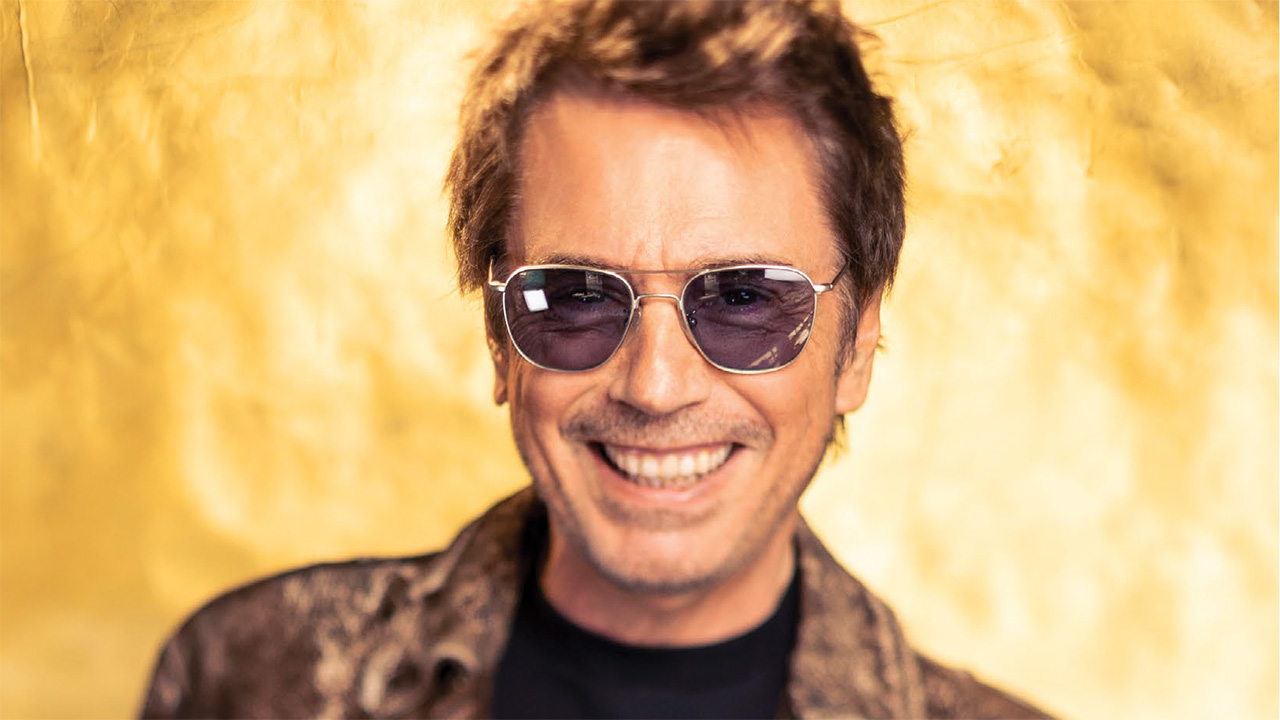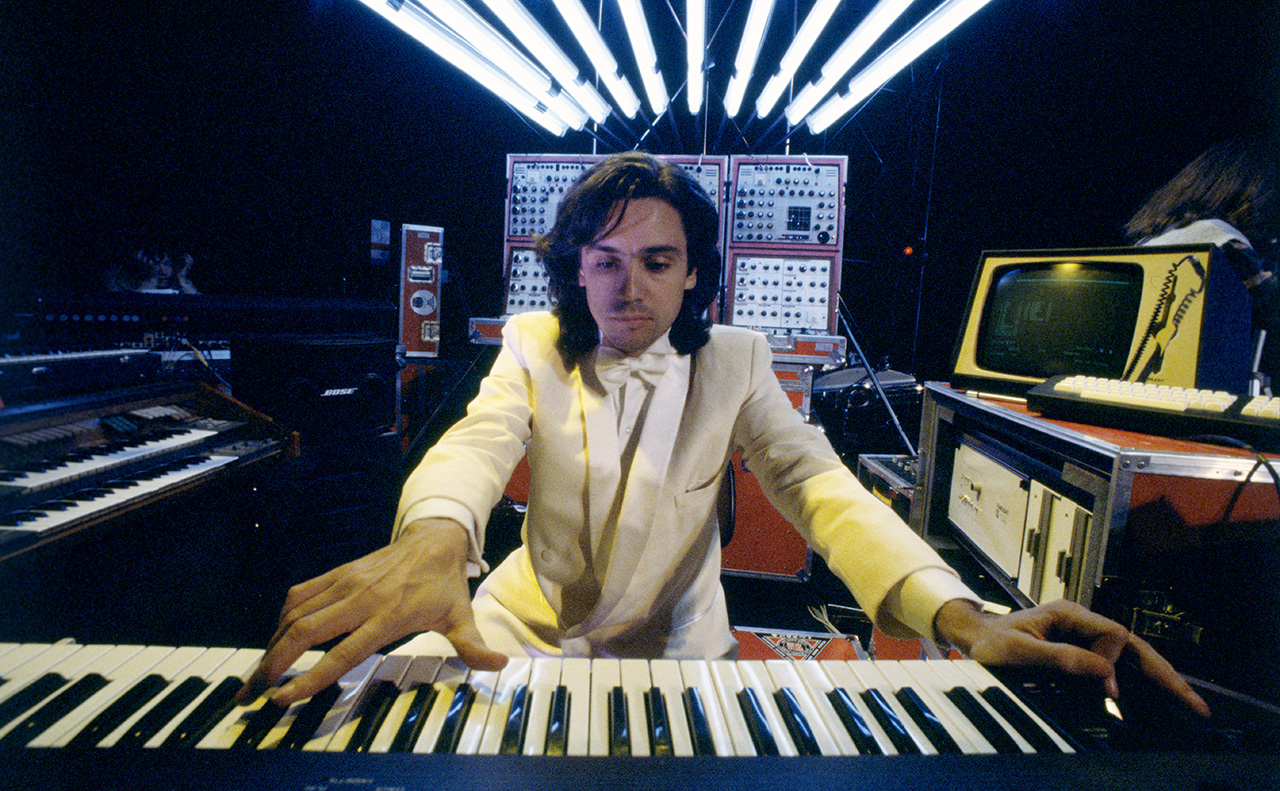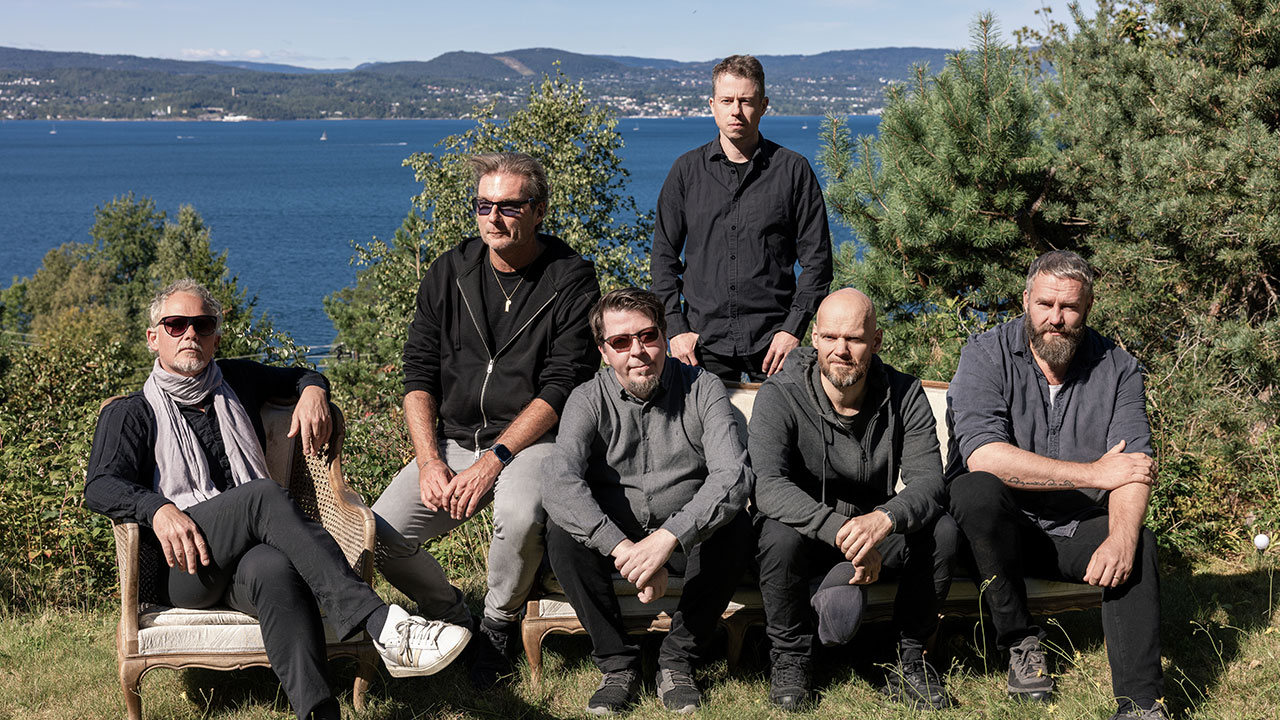“Young musicians are lucky to live in this world of ideas and disruption. Humans have a dark attitude to the future. But if we were right, we wouldn’t be here”: Jean-Michel Jarre predicts music will follow video games into immersive universes
The death of a mentor and the world-pausing Covid event gave the eternal pioneer a chance to discover another new approach to his art: “The visual field for a human being is 140 degrees, but the audio field is 360 degrees”

He was the darling of epic ambient electro in the 70s and 80s. Then in 2022 Jean-Michel Jarre continued to push boundaries with Oxymore, his 22nd album. That year he told Prog about the immersive project that pays homage to musique concrète pioneer Pierre Henry, and the VR world that accompanies it.
Back in the technologically primitive days of the mid-20th century, the musique concrète movement was truly revolutionary. It was instigated by engineer and musicologist Pierre Schaeffer and his colleagues at Club D’Essai, a studio based within Radiodiffusion-Télévision Française (aka RTF), France’s national broadcasting agency, in the 40s.
Based on the premise that sounds could be collected, manipulated and turned into music, musique concrète was an intrinsically progressive endeavour, and one that has had a profound and enduring impact on music of all stripes.
For Jean-Michel Jarre, Schaeffer and his most notable collaborator and composer, Pierre Henry, are the starting point for everything he’s conjured from his machines over the last 50 years. Notably, Henry was Jarre’s mentor during his studies in Paris in the late 60s, which is one of the reasons he pays direct tribute to his former tutor and the whole musique concrète movement on his new album.
Oxymore is a noisy, opaque and challenging piece of work that takes Jarre’s music into a whole new, immersive world. “Until the two Pierres began their experiments, music was done only with notes,” he says. “Suddenly, you had these guys saying that music is also about sounds. They were taking the sound of an engine and mixing it with a clarinet, or taking the sound of a bird and mixing it with an electric guitar. They created this organic approach to music that, in my opinion, has not really been recognised properly. It’s really the origin of the way we make music today.
“I had the idea to collaborate with Pierre Henry for a project called Electronica. I wanted to do a track together, but he got ill and passed away. I was surprised when his widow gave me some sounds he’d said he wanted me to use one day. In the end, I didn’t use too many of Pierre’s sounds – but I used them as spice, as seasoning, here and there. You can hear his voice on the track Zeitgeist. But he was more important to me as a source of inspiration.”
Jarre has made a career from thinking bigger and pushing boundaries. From the groundbreaking electronica of early classics Oxygène and Équinoxe, through to the digital prescience of 80s albums Zoolook and Rendez-vous, his catalogue has often been defined by how relentlessly ahead of the technological game he’s been. But even by his own standards, Oxymore is a very forward-thinking and challenging piece of work.
Sign up below to get the latest from Prog, plus exclusive special offers, direct to your inbox!
Rooted in gritty electronica and the sonic free-for-all of musique concrète, multi-layered pieces like the bubbling IDM of Sonic Land and Synthy Sisters’ woozy, glitched-out, ambient dub are endlessly fascinating and unpredictable. Oxymore goes far beyond mere music.
As with 2021’s Amazônia, it’s available in 360-degree Spatial Audio, alongside headphones-only binaural and standard stereo versions; and it’s been custom-built to be experienced within virtual reality. Jarre has even created his own VR world – Oxyville – as the optimum environment within which to experience the new music. As he explains, he believes it’s time for music to catch up with video games.
Actually, stereo doesn’t exist in nature… it’s a kind of 2D relationship we have with music
“I’ve been quite involved with VR and immersive worlds for a while. I think the Covid period played a role of an accelerator in our relationship with digital worlds and interfaces,” he says. “Everyone is talking about immersive worlds visually – no one is talking about immersive worlds of sound. The visual field for a human being is 140 degrees, but the audio field is 360 degrees.
“Actually, stereo doesn’t exist in nature! When a car passes by, the sound is in mono. When you write for orchestra, you visualise the orchestra with strings on one side, percussion in the centre, brass on the other side. When you’re in the studio you have speakers in front of you. When you’re at a concert you have the PA system in front of you. So it’s a kind of 2D relationship we have with music.”
Oxymore’s blend of fractious, industrial clatter and disorientating, otherworldly ambience seems to have been conceived with a 360-degree presentation in mind. Even the standard stereo mix of tracks like thunderous techno-banger Brutalism pulls off sonic tricks that feel gently subversive. The sense that Jarre is once again leading electronic music into uncharted territory is palpable.
“Of course, making a record like this is a totally different process,” he says. “But I’m quite convinced that it’s going to be a game-changer. I believe that the prog rock, the punk rock, the hip hop of the next generation will be defined by this technology and influenced by it.
“And really, we don’t care about technology – only the result matters. Is it working? Is it creating feeling or emotions or not? This new approach is sending us back to a very natural way of listening to sounds in everyday life.”
Our first virtual world is a book. You’re being an observer within the story. We’re just going one step further
Aside from looking at least a decade younger than his 74 years, Jarre seems to thrive on a relentless search for the next great way of doing things. “I wanted to create a live event for Oxymore, so in VR we can explore the visual possibilities of what could be a blueprint for a potential concert,” he explains. “I thought it would be fun to create a music city, the city of Oxyville. It could be somewhere between Metropolis and Sin City, with buildings made from the broken parts of old synths and old tape recorders. Then I’ll play live in this city. Each track will be dedicated to a district, and at the end of each track you’ll be teleported to another district.”
Whether you’re familiar with VR or not, Oxymore has sufficient allure as a purely aural experience to hit the spot, even without the added thrill of being transported around an artificial, stylised world. Jarre has designed the album to maximise the sonic potential of more advanced audio formats, and he’s almost evangelical about enabling music to fulfil its potential as an experiential art form.

“The whole thing is based on spatial audio and surround sound, because I’m convinced this is the way we’re going to listen to music in the very near future. People have electric cars, which are going to eventually become pocket auditoriums. People have these incredible soundbars with their TV sets. We’re going to have a much more 3D relationship with the music. If I play live in reality, I want to do it without any visuals and go back to what the music is about: closing your eyes, listening and having a real trip and a real music experience. But I want to keep the visual experience within VR.”
Teenagers will have a much better grasp of the technology than some of us old folk. “Yeah, I know! It will make sense to young people, I think. But this idea of teleporting ourselves in an imaginary worldis not new. Our first virtual world is a book. When you read, it could be Dickens or Harry Potter, and you’re imagining the faces of the characters. You’re being an observer within the story, in a sense. We’re just going one step further.
If Pierre had been American, he would probably be even more important than John Cage
“This is opening doors onto virgin territory. I think young musicians are very lucky to live in this world of ideas and disruption. The future is exciting – as human beings we always have a very dark vision and attitude about the future. We always think tomorrow is going to be worse than today, but that’s not true. If all those previous futures were so bad, we wouldn’t be here to talk to each other!”
For the mixing of Oxymore, Jarre returned to Radio France’s Maison de la Radio et de la Musique, where his first electronic experiments were conducted more than 50 years ago. In terms of the technology on offer, a lot has changed since those inquisitive, formative years – but he insists that some things remain the same, regardless of era.
“Now we can do in one second something that would have taken five hours with Sellotape and scissors back in the day! But at the same time, the approach of sound design is more or less the same. It’s about finding a sound, and how to integrate it into a melody or using it to make a beat.
“This whole project – even beyond my association with Pierre Henry – is a tribute to this French way of doing electronic music in the early days. Pierre Henry is not known at all worldwide. If he’d been American, he would probably be even more important than John Cage. Everyone from The Beatles to Rammstein have been influenced by him.”
I’m not into nostalgia. I’m not interested in what I’ve done before, because it no longer belongs to me
The same could arguably be said of Jarre himself. But while he regards Henry and his musique concrète comrades as kindred spirits, he’s reluctant to be labelled as the habitual pioneer his myriad achievements would seem to suggest. “I don’t think of myself in that way,” he says, looking slightly embarrassed. “I’m not into nostalgia. I’m not interested in what I’ve done before, because it no longer belongs to me.
“But I am quite curious. I think it comes from my grandfather. He was quite a character – he was a musician and an engineer and an inventor. He influenced me a lot in terms of mixing technology and art, and opening my eyes to being curious and exploring new territory.”
From Oxygène to Oxymore, Jarre has taken the freewheeling ethos of an earlier, revolutionary era and gleefully applied it to the cutting edge of music technology. Still exhilarated by the promise of a better, smarter future, he continues to be one of the few artists whose next move remains a perpetual mystery. And that’s just the way he likes it.
“I’ve been lucky to live through three moments of disruption,” he concludes. “The first was when I started, at the beginning of electronic music. The second was the digital era, with the rise of computers, and the third is this revolution of immersive worlds and the metaverse, and the fact that we can again push the boundaries of creativity.
“This Oxymore project makes me feel like a beginner – I’m opening doors on something new.”

Dom Lawson has been writing for Metal Hammer and Prog for over 14 years and is extremely fond of heavy metal, progressive rock, coffee and snooker. He also contributes to The Guardian, Classic Rock, Bravewords and Blabbermouth and has previously written for Kerrang! magazine in the mid-2000s.
You must confirm your public display name before commenting
Please logout and then login again, you will then be prompted to enter your display name.




